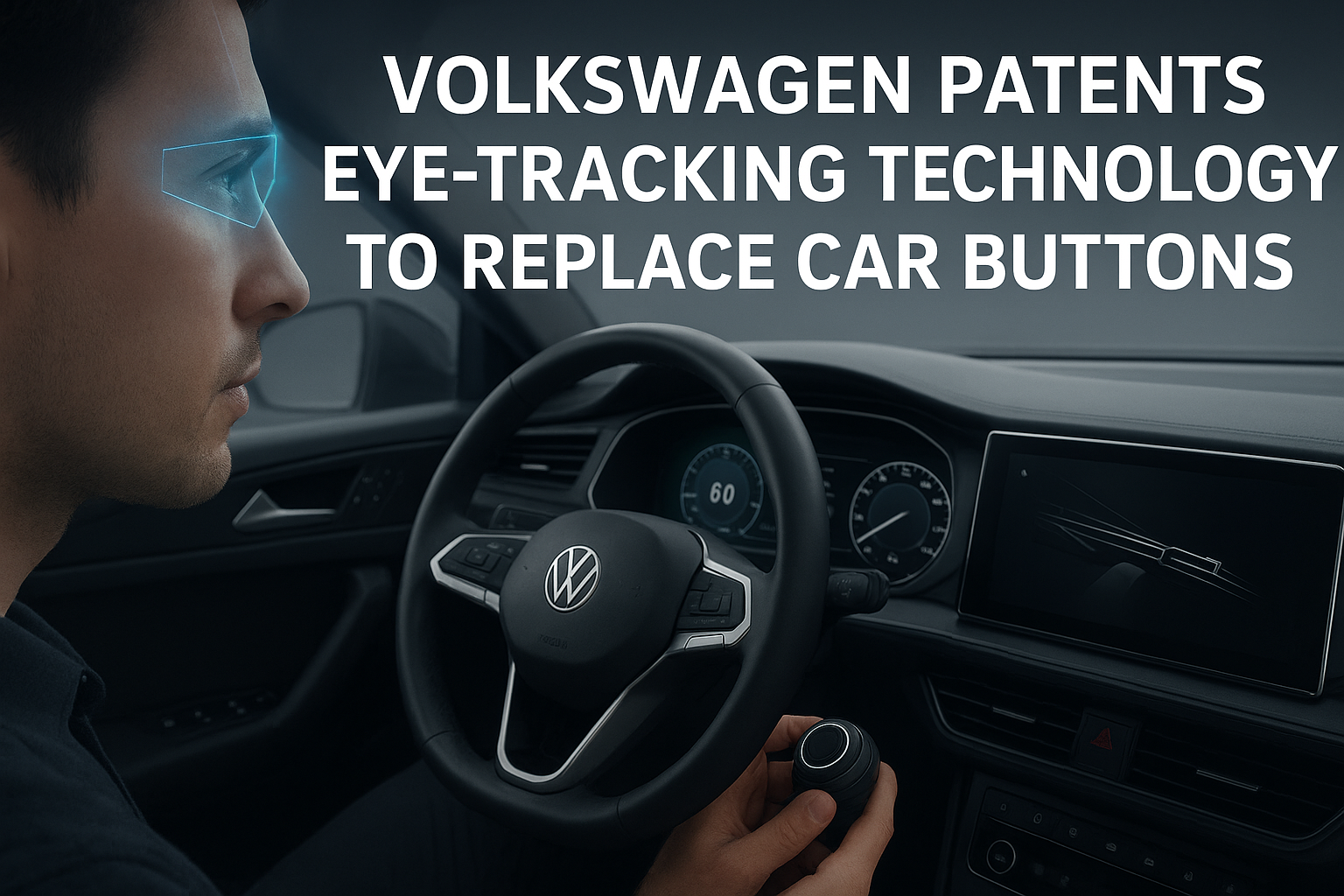Volkswagen has filed a new patent that could revolutionize — or complicate — how drivers interact with their cars. The German automaker is developing an eye-tracking control system designed to replace physical buttons and switches with intelligent gaze-based commands.
How the Eye-Tracking System Works
According to the patent, Volkswagen’s system uses cameras and sensors to monitor where a driver is looking. When the driver focuses on a particular component — such as the air vents, music controls, or window buttons — the system identifies the intended target.
Once selected, the driver uses a universal joystick-style controller on the steering wheel to execute the action. This controller can be pressed, rotated, or moved to adjust functions like temperature, volume, or mirror angle.
The technology aims to merge eye movement detection with a single multifunction control, minimizing dashboard clutter and reducing the number of physical buttons.
Potential Benefits of the Technology
Volkswagen says the innovation could create cleaner interiors and offer intuitive control over in-car systems. By combining gaze detection with a single control unit, the system could simplify the driving experience while keeping hands closer to the steering wheel.
The automaker suggests this feature could also apply to trucks, boats, and aircraft, hinting at wider use beyond traditional cars.
Concerns Over Driver Distraction
However, not everyone is convinced. Critics argue that eye-tracking could be more distracting than traditional tactile buttons. Drivers may need to look around the cabin to activate features, diverting attention from the road.
There are also concerns about accuracy, especially in challenging conditions — such as bright sunlight or when drivers wear sunglasses. Any lag or misinterpretation could make the system frustrating or unsafe.
Automotive experts stress that such systems must pass strict safety and reliability tests before being integrated into production models.
A Step Toward Button-Free Cars
Volkswagen is not the first automaker to explore gesture- and gaze-based interfaces. Brands like BMW and Mercedes-Benz have already tested similar technologies, blending AI and human-machine interfaces.
Still, this patent suggests Volkswagen sees a future without buttons, where smart software interprets a driver’s intent through sight and minimal movement.
What Comes Next
For now, the technology remains a patent concept, not a confirmed production feature. Automakers often file patents to secure intellectual property and explore potential innovations.
If developed further, Volkswagen’s gaze-based control could debut in premium electric or autonomous models before filtering into mainstream vehicles.

